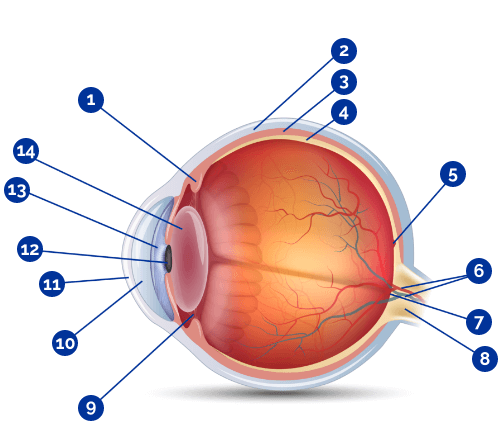Your sight
The eye, physiology, diseases and conditions of the eye.
The eye
The eye is like a camera. It lets light in through the cornea, which is like a camera's aperture. The amount of light allowed in is controlled by the pupil, which opens and closes a bit like a shutter. The light focuses on the retina, which sends the image to the brain, acting as film would in order to record the light (the photo itself).
Other eye structures support the main activity of sight: Some carry fluids (such as tears and blood) to lubricate or nourish the eye. Others are muscles that allow the eye to move. Some protect the eye from injury (such as the lids and the epithelium of the cornea). And some are messengers, sending sensory information to the brain (such as the pain-sensing nerves in the cornea and the optic nerve behind the retina).
Disease or damage can occur in any of the structures of the eye, so ophthalmology is divided into many specialities.

-
Ciliary body
-
Sclera
-
Choroid
-
Retina
-
Fovea
-
Central retina artery and vein
-
Optic disc (blind spot)
-
Optic nerve
-
Suspensory ligament
-
Aqueous humour
-
Cornea
-
Pupil
-
Iris
-
Lens


